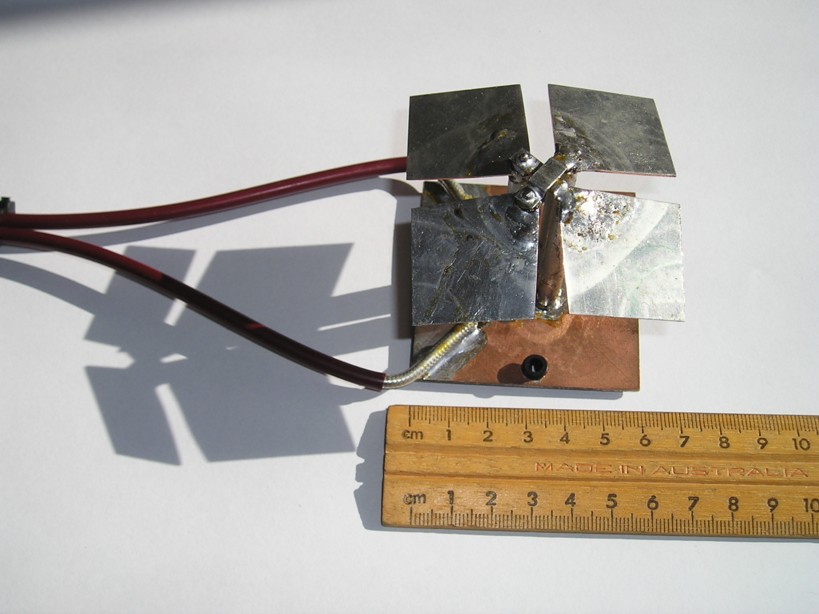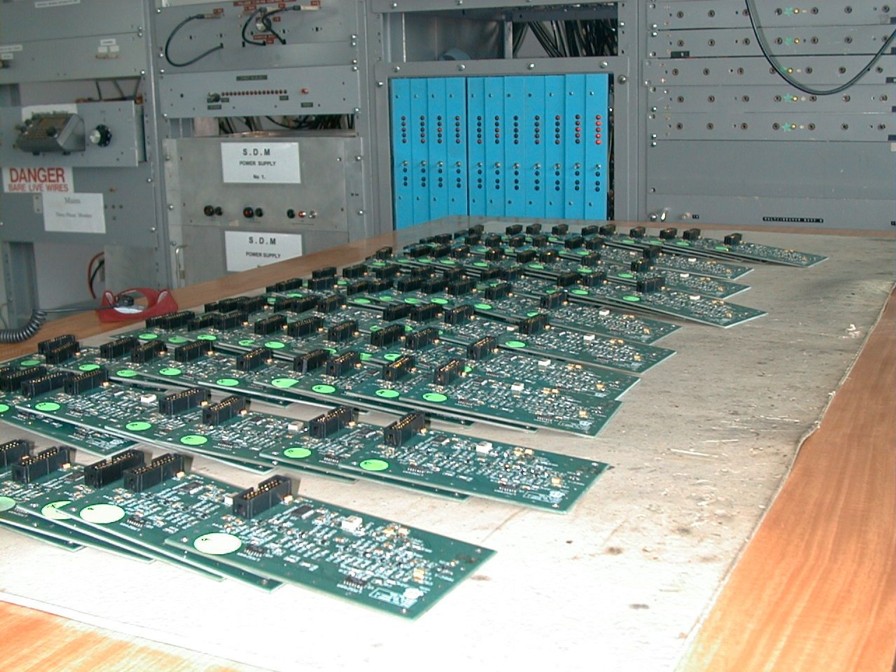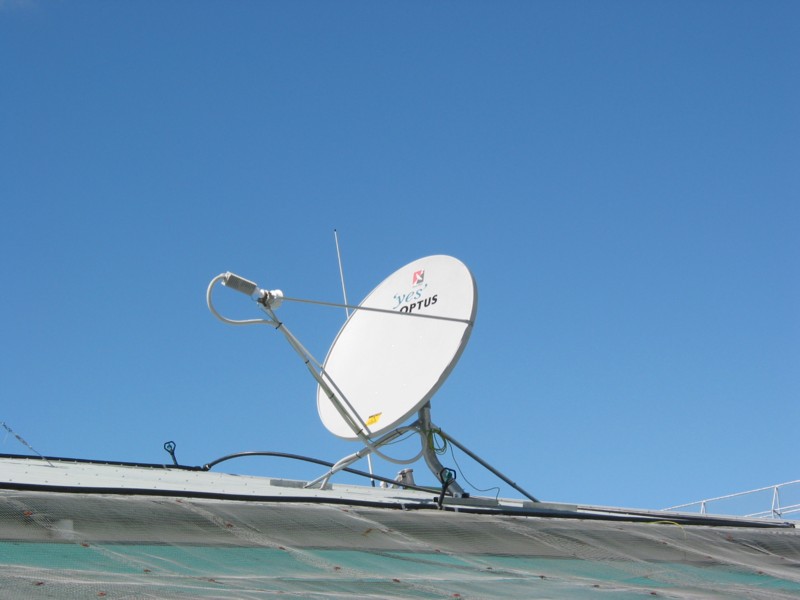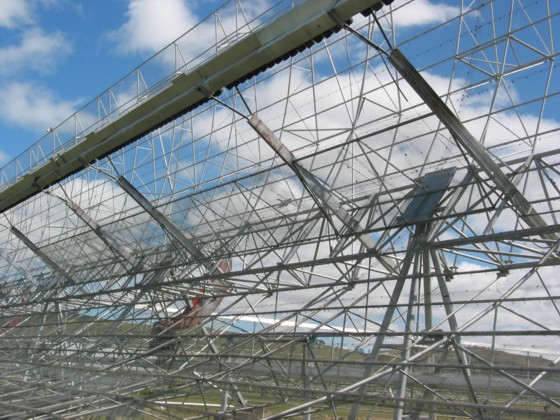
|
|
|
|
|
|
Prototype linefeed dipole
constructed and tested Prototyping of the linefeed antenna elements has begun with a wideband dipole shown opposite. The dipole has been measured over a wide bandwidth for pattern and impedance characteristics. The next stage involves building an 8 element array.
|
 |
 |
Front-end electronics approaching completion - first fringe! The development of front-end electronics for SKAMP Stage 1 operation is nearing completion. One hundred ADC (analogue to digital converter) boards have been manufactured to sample the IF signal. The phase and delay boards are currently being manufactured, and will be tested and debugged during July 2004. The completion of the ADC's allowed the capture of our first fringe shown opposite. |
|
High speed data connection installed on site The control building has recently been fitted with a new high bandwidth data connection, via satellite (due to the remoteness of the site). This will allow for faster data connections between the site, and astronomers at University, and will facilitate technological upgrades to the telescope such as Virtual Observatory, remote system monitoring/maintenance etc.
|
 |
 |
Testing of Spoilers on East/West arm In preparation for SKAMP II & III, and as part of the ongoing upgrades to the telescope, testing of spoilers was performed on the East /West arm of the telescope. The spoilers are designed to stop additional reflection occurring thus giving a more stable gain when scanning in the meridian distance.
|
|
After near disaster when the correlator PCB was deemed "too complex to manufacture" in late December 2003, the Correlator PCB has been redesigned using a simpler PCB layer/layout approach. In order to do this, Cadence SPEECTRA autorouter was used, easing the redesign process. The PCB is now complete and currently undergoing manufacture. It is a 10 layer board, (350mm x 250mm) with blind, buried and through vias. It houses 21 x Xilinx Spartan XC2S300E FPGA's. It is hoped that the board will be ready for prototype testing by the end of June 2004, and achieving first light by the end of June/July 2004.
|
|
Page Last Updated 7-06-04 by Tim.